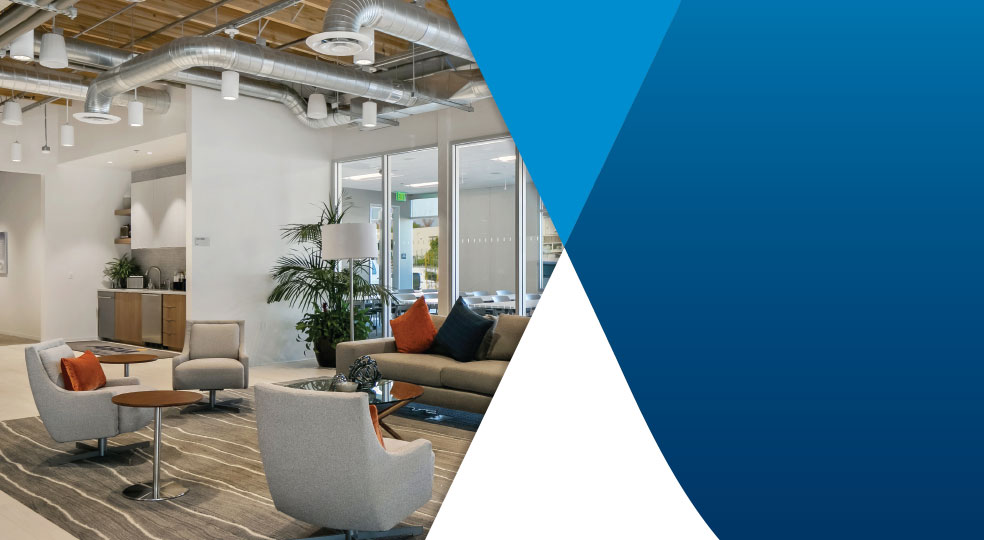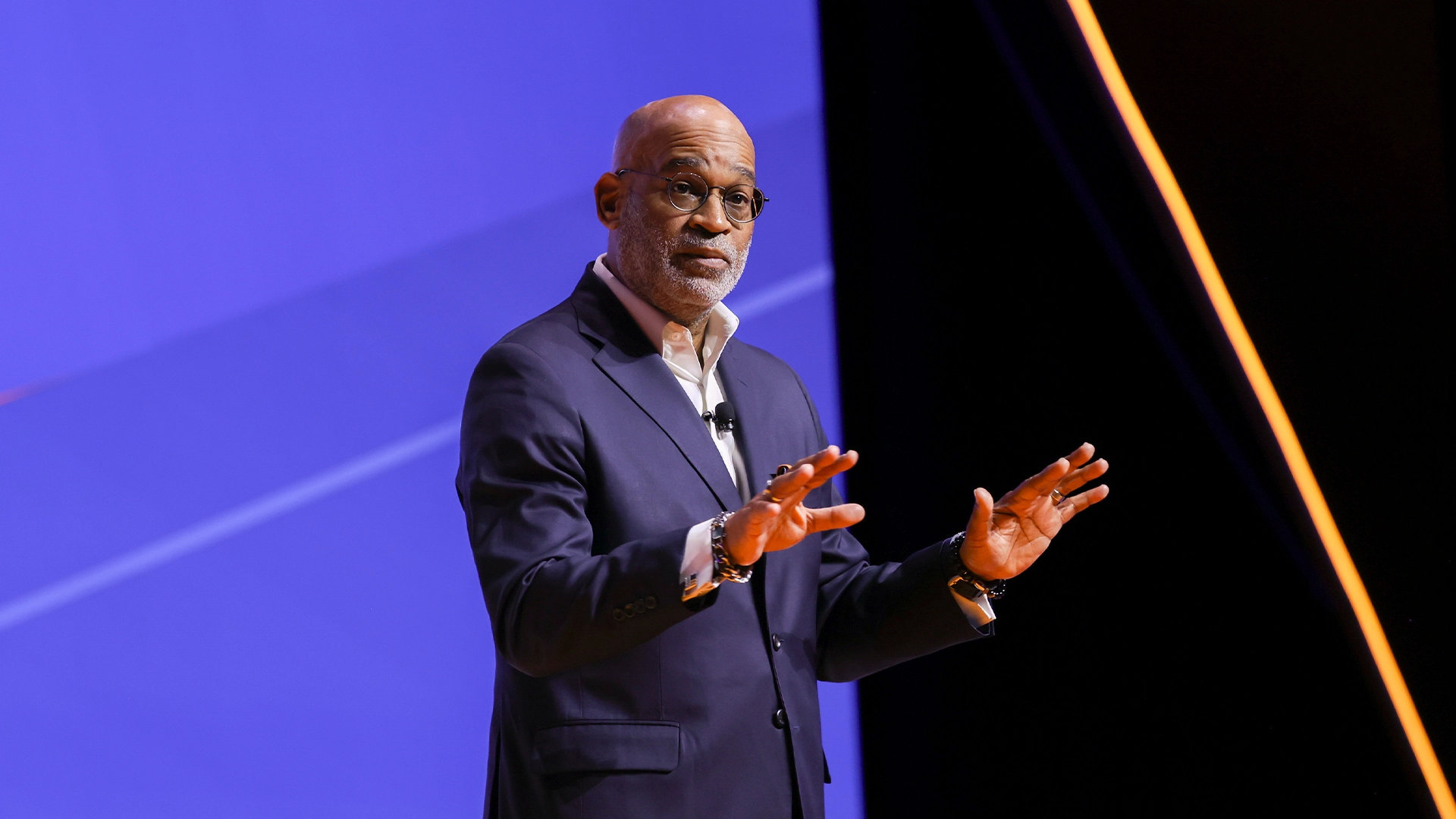How Can Facility Management Improve Occupant Experience?
HOW WE GATHERED THESE INSIGHTS
In the rapidly changing field of facility management, gleaning the correct conclusions from often-conflicting information can be a challenge, especially as it relates to impacts on occupant experience. How can a facility manager know that their efforts will yield positive results? Building Operations Management and ABM teamed up to survey 135 facilities managers and executives on the key trends they're seeing in the FM space, and how they're incorporating them into their own operations. Read on to learn how your initiatives stack up against what other facilities managers are planning for 2020 and beyond.
Weighing Key Factors to Determine Priorities
Occupant experience is an increasing priority for facility executives. Two-thirds of respondents said that occupant experience is more important to them now than it was five years ago. This mirrors industry-wide trends that place emphasis on tenant attraction and retention through increasingly comfortable environments that meets more occupant wants and needs.
Despite the importance of occupant experience, budgets loom large as facility executives seek to improve on that measure. Seventy-seven percent identified tight budgets one of the biggest obstacles respondents faced in efforts to improve occupant experience, making costs by far the most commonly identified barrier. Thirty-seven percent put length of budget review cycles on the list of barriers.
The second biggest factor, as shown by the number of responses, was conflicting priorities, at 57 percent. Time pressures were also widely cited, with 38 percent calling lack of time an obstacle.
Even though occupant experience is clearly important to top management when it evaluates facility department performance, the survey data shows that one key facility-related factor is often overlooked. A growing body of evidence shows that the physical environment has a major impact on a wide variety of occupant outcomes, such as productivity, patient health, satisfaction, and student learning. Nevertheless, only 29 percent of respondents said that support for key occupant outcomes was critical to the way their department is evaluated.
"PEOPLE SPEND THE MAJORITY OF THEIR AWAKE HOURS AT WORK. INFLUENCING THAT ENVIRONMENT IMPROVES ALL LEVELS OF THE WORK EXPERIENCE."
"THE BIGGEST IMPACT ON OCCUPANT EXPERIENCE WOULD BE IMPLEMENTING A LARGER, MORE COMPREHENSIVE PLAN FOR FACILITY MANAGEMENT."
HOW IMPORTANT ARE THE FOLLOWING FACTORS IN THE WAY THAT YOUR DEPARTMENT IS EVALUATED?
FACTORS
- CLEANLINESS OF BUILDINGS AND GROUNDS - Critical 50%, Important - 47%, Not very Important - 2%, Not at all Important - 1%, Res - 96
- MEETING SCHEDULES - Critical 24%, Important - 61%, Not very Important - 15%, Not at all Important - 0%, Res - 95
- PERFORMANCE TO BUDGET - Critical 44%, Important - 53%, Not very Important - 3%, Not at all Important - 0%, Res - 94
- RESPONSES TO OCCUPANT COMPLAINTS - Critical 56%, Important - 43%, Not very Important - 1%, Not at all Important - 0%, Res - 95
- SUPPORT FOR KEY OCCUPANT OUTCOMES - Critical 29%, Important - 61%, Not very Important - 7%, Not at all Important - 3%, Res - 95
"IMPROVING CUSTOMER SERVICE IS THE KEY TO DETERMINING INVESTMENTS IN THE FUTURE."
FACILITY OPERATIONS
Aligning Importance and Execution
To provide deeper insight into the drivers that achieve that result, the survey probed the impact of facility operations on the people who work, study, heal, shop, or carry out other important activities in buildings. Responses showed that the key for facility executives is to excel at the basics: A clean, comfortable workplace with a responsive facility team is at the heart of a positive occupant experience.
Given their importance, these operational factors deserve their place as FM priorities. But the survey implies that there's some room for operational improvement in a significant number of facilities. While a majority of respondents scored their performance as solid in all four areas, the survey suggests a gap between importance and execution. For example, asked about their ability to deliver comfortable temperatures, only 13 percent ranked themselves as exceptional, while 26 percent said their performance could be better. (See "Facility Operations: Room for Improvement?") Of the four top operational factors shaping occupant experience, responsiveness got the highest marks for achievement, with 35 percent scoring their performance as exceptional and 15 percent indicating that responsiveness could be better.
HOW DO YOU RATE YOUR ABILITY TO DELIVER GOOD OCCUPANT EXPERIENCE IN THESE AREAS?
"UNLESS THE BUILDING CAN BE REMODELED, OPERATIONS IS CRITICAL TO KEEPING STAFF AND USERS HAPPY"
"ALL OCCUPANTS WANT FACILITY OPERATIONS TO WORK SMOOTHLY AND SEAMLESSLY FOR THEM."
ABILITY TO DELIVER GOOD OCCUPANTEXPERIENCE IN THESE AREAS
- A CLEAN WORKSPACE - Exceptional 24%, Solid - 63%, Could be better - 13%, Poor - 0%, Res - 128
- ABILITY TO TRACK & MANAGE WORK ORDERS - Exceptional 24%, Solid - 56%, Could be better - 18%, Poor - 2%, Res - 128
- COMFORTABLE TEMPERATURES - Exceptional 13%, Solid - 61%, Could be better - 26%, Poor - 0%, Res - 128
- GOOD INDOOR AIR QUALITY - Exceptional 22%, Solid - 58%, Could be better - 20%, Poor - 0%, Res - 128
- GOOD, ENERGY EFFICIENT OPERATIONS - Exceptional 9%, Solid - 39%, Could be better - 45%, Poor - 7%, Res - 128
- QUICK RESPONSES TO OCCUPANT REQUESTS AND CONCERNS - Exceptional 35%, Solid - 49%, Could be better - 15%, Poor - 1%, Res - 128
- WELL MAINTAINED GROUNDS - Exceptional 17%, Solid - 61%, Could be better - 22%, Poor - 0%, Res - 127
FACILITY OPERATIONS
Common Opportunities to Improve
While most respondents gave themselves relatively high marks on facility operations, they were somewhat less satisfied with the design features in their buildings. Twenty six percent indicated that the design could be better or was poor in terms of offering a smart, connected workplace. Thirty one percent said that aesthetics and space flexibility could be better, and 39 percent saw room for improvement with energy efficient design.
HOW WELL DO YOUR FACILITIES DELIVER GOOD OCCUPANT EXPERIENCE IN THESE AREAS?
DELIVER GOOD OCCUPANT EXPERIENCE IN THESE AREAS
- A FLEXIBLE PHYSICAL ENVIRONMENT - Exceptional 11%, Solid - 58%, Could be better - 31%, Poor - 0%, Res - 115
- A SMART, CONNECT WORKPLACE - Exceptional 19%, Solid - 55%, Could be better - 22%, Poor - 4%, Res - 114
- AESTHETICS OF SPACE - Exceptional 17%, Solid - 52%, Could be better - 31%, Poor - 0%, Res - 115
- AVAILABILITY OF FOOD & BEVERAGE OPTIONS (E.G. COFFEE BARS) - Exceptional 15%, Solid - 52%, Could be better - 31%, Poor - 0%, Res - 115
- CONVENIENT PARKING - Exceptional 18%, Solid - 57%, Could be better - 25%, Poor - 0%, Res - 115
- ENERGY EFFICIENCY - Exceptional 10%, Solid - 51%, Could be better - 38%, Poor - 1%, Res - 114
- MEASURES TO IMPROVE OCCUPANT WELLNESS - Exceptional 8%, Solid - 49%, Could be better - 39%, Poor - 4%, Res - 114
- ON-SITE AMENITIES - Exceptional 12%, Solid - 31%, Could be better - 42%, Poor - 15%, Res - 115
- SUSTAINABILITY PROGRAMS - Exceptional 6%, Solid - 48%, Could be better - 38%, Poor - 8%, Res - 114
- VIEWS OF THE OUTDOORS - Exceptional 17%, Solid - 47%, Could be better - 31%, Poor - 5%, Res - 115
TECHNOLOGY
The Ongoing Role of Technology
Facility executives responding to the survey ranked technology behind design and operations as the biggest opportunity to improve occupant experience. Nevertheless, the survey data contains abundant evidence that facility executives understand the value of technology and are very interested in applying new technology to improve occupant experience.
WHICH OF THESE TECHNOLOGIES HAVE YOU IMPLEMENTED OR DO YOU PLAN TO IMPLEMENT IN ORDER TO IMPROVE OCCUPANT EXPERIENCE?
"BETTER REAL-TIME INFORMATION AND CONNECTIVITY FROM FACILITY SYSTEMS - THAT'S THE ONE THING I WOULD LIKE TO HAVE TO MAKE THE BIGGEST IMPACT ON OCCUPANT EXPERIENCE."
"THE DESIGN WAS DONE YEARS AGO, SO IT IS WHAT IT IS. THE TECHNOLOGY IS WHERE WE CONTROL AND GATHER DATA."
- APPLICATIONS OF ARTIFICIAL INTELLIGENCE AND MACHINE LEARNING IN BUILDING SYSTEM - 16%
- BUILDING INTERNET OF THINGS TOOLS AND PLATFORMS FOR GATHERING AND ANALYZING INFORMATION ON OCCUPANT USE OF SPACE - 35%
- BUILDING INTERNET OF THINGS TOOLS AND PLATFORMS FOR GATHERING AND ANALYZING INFORMATION ON ENERGY CONSUMPTION - 44%
- DATA ANALYTICS - 42%
- DRONES - 15%
- MOBILE ENHANCEMENT TECHNOLOGY - 27%
- ROBOTICS - 5%
- TECHNOLOGIES THAT PROVIDE OCCUPANTS WITH GREATER CONTROL OVER TEMPERATURE AND LIGHTING - 35%
- TUNABLE LEDS - 42%
- VIRTUAL REALITY/AUGMENTED REALITY TOOLS - 4%
CHALLENGES
WHAT ARE THE BIGGEST OBSTACLES YOU FACE IMPROVING OCCUPANT EXPERIENCE?
- CONFLICTING PRIORITIES - 57%
- DIFFICULTY EVALUATING PRODUCT AND SERVICE PROVIDERS - 16%
- LACK OF TIME - 38%
- LENGTH OF BUDGET APPROVAL CYCLES - 37%
- QUALITY OF OUTSOURCED SERVICE PROVIDERS - 24%
- TIGHT BUDGETS - 77%
- TROUBLE REACHING INTERNAL CONSENSUS - 22%
GETTING IT DONE
Outsourcing Remains Popular
The survey data shows that outsourcing will continue to be an important strategy for facility executives. Almost half of respondents - 47 percent - expect to increase their use of outsourcing in the future. That result is in line with data from BOM's annual Facility Pulse survey, which suggests a slow but steady increase in outsourcing. The Facility Pulse outsourcing results have remained consistent for the past 10 years regardless of the economy: 7 to 10 percent indicate decreases in outsourcing; 16 to 20 percent indicate increases; 71 to 75 percent report staying about the same. In other words, approximately twice as many respondents indicate increases as decreases a difference that would lead to a significant increase in
outsourcing over time.
The ABM/BOM survey showed that the largest numbers of respondents would consider outsourcing HVAC and mechanical (73 percent), janitorial (68 percent), and landscape and turf (68 percent) services.
In conversations within the industry, it is sometimes said that facility service outsourcing contracts ultimately go to the low bidder. The survey data shows that, while price is indeed a major consideration, most facility executives take a nuanced approach that balances both cost and quality. The largest number of respondents (45 percent) agreed that, while costs are important, they put a lot of emphasis on quality in the final decision. And another 11 percent said that they focus very heavily on quality.
Organizations today clearly understand both the importance of occupant experience and the central role that facilities play in improving that experience. Facility executives look to design, operations, and technology to provide a better experience for occupants. But challenges remain, especially tight budgets and conflicting priorities.
WHICH SERVICES WOULD YOU CONSIDER OUTSOURCING IN THE FUTURE?
- HVAC AND MECHANICAL - 73%
- JANITORIAL - 68%
- LANDSCAPE AND TURF - 68%
- ELECTRICAL AND LIGHTING - 52%
- ENERGY- 43%
- ENGINEERING - 43%
- INTEGRATED FACILITY MANAGEMENT - 41%





